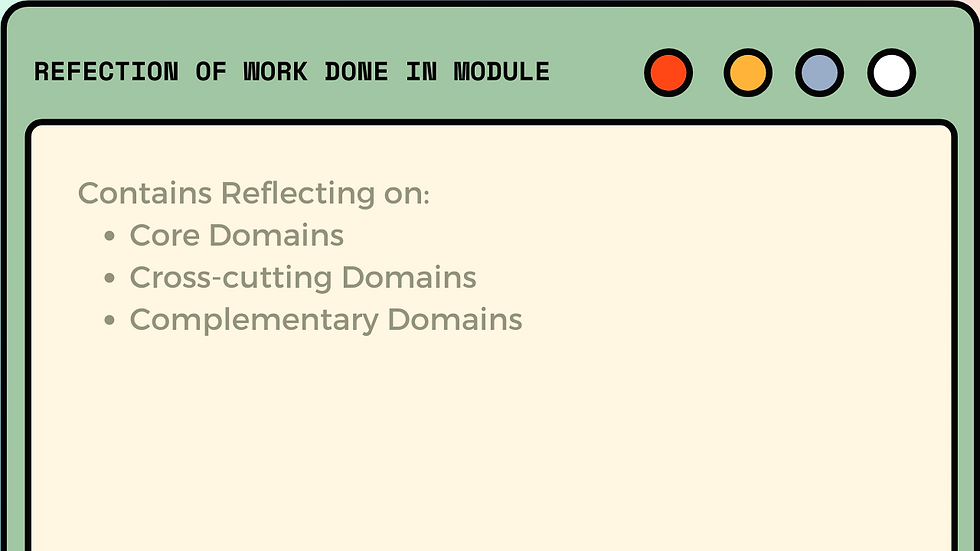Week 3 Reflection - 1
- 2428616
- Sep 12, 2022
- 3 min read
Updated: Nov 2, 2022
Activity 1.3.2 - Case Study on Life Esidimeni, a reflection
The Life Esidimeni tragedy is about the death of ninety-four (and possibly more) mental health patients that occurred from the 23rd of March 2016 to the 19th of December 2016. The patients were transferred from the Life Esidimeni (LE) Hospital Non-Governmental Organisation (NGO) which were said to specialised in providing mental healthcare. 2000 patients were transferred. “All the 27 NGOs to which patients were transferred operated under invalid licenses” (W Makgoba, 2017) Many patients were transferred out of the LE hospital, that provides quality full time care, to NGO’s that were not fully equipped with staff that had the necessary skills provide care to metal health patients nor did they have the necessary resources. Some patients were moved to NGO’s far away from family members, sometimes being transferred to multiple NGO’s before they could be found. Some families were not notified of their family members being moved out of the LE hospital. The transfer of patients was apparently to move towards deinstitutionalised care for mental heal users however, the throughout the process of doing so there was a lack of organisation which led to disarray irresponsible way of dealing with patients.
The Mental Health Care Act, (MHCA), 2002 (Act No. 17 of 2002), was a law used to justify the above actions and how rapidly the process took place, while it is recommended, conversely, that “Deinstitutionalisation of patients must be done systematically and with adequate provision made for community services” (W Makgoba, 2017) The departments decision was protested with the “South African Society of Psychiatrists (SASOP) writing to the MEC Qedani Mahlangu and team warning about the likely consequences of terminating the contract with Life Esidimeni. They warned that the move was "premature" and would result in negative outcomes. Around the same time the South African Depression and Anxiety Group (Sadag) also expressed concern about the termination of contract. They were however lambasted by the MEC.” (City Press, 2017)
Human right of the patients were violated according to the “Constitution and contravened, the National Health Act (NHA), (Act No. 61 of 2003) and the Mental Health Care Act (MHC), (Act No. 17 of 2002). Some executions and implementation of the project have shown a total disregard of the rights of the patients and their families, including but not limited to the Right to Human dignity; Right to life; Right to freedom and security of person; Right to privacy, Right to protection from an environment that is not harmful to their health or well-being, Right to access to quality health care services, sufficient food and water and Right to an administrative action that is lawful, reasonable and procedurally fair.” (W Makgoba, 2017)
Health inequity is defined as systematically putting people who are already social disadvantaged at a further disadvantage to their health. The Life Esidimeni Tragedy illustrates how health inequity happens to people who can access and afford healthcare. Respect for mental health users has to be taught to communities. In addition to this the people need to be educated on what being mental health patient is so that situations like this do not occur where people think believe it is acceptable to cut costs in providing health care services to mental health users. “This move, she said, was to save the department money” (City Press, 2017)
Through this case study I learnt that even with all the health education that a community can be given, the health services, the rights pertaining to health that are put in place and the public health studies that are conducted it is particularly important that leaders who are in charge care about the people that their decisions affect. Their moments of selfishness and greed can devastate the same communities that they claim to care about and lead to so many lives being lost. In my opinion not having a good leader to manage health systems should be considered health inequality.
References
City Press. (2017, February 7). Timeline: Life Esidimeni tragedy. Retrieved September 8, 2022, from Citypress website: https://www.news24.com/citypress/News/timeline-life-esidimeni-tragedy-20170207
W Makgoba, P. M. (2017). THE REPORT INTO THE “CIRCUMSTANCES SURROUNDING THE DEATHS OF MENTALLY ILL PATIENTS: GAUTENG PROVINCE.” In Life-Esidimeni-FINALREPORT.pdf (pp. 8, 9). HEALTH OMBUD: Republic of South Africa: Office of the Health Ombud. Retrieved from Office of the Health Ombud website: https://section27.org.za/wp-content/uploads/2016/04/Life-Esidimeni-FINALREPORT.pdf


Comments